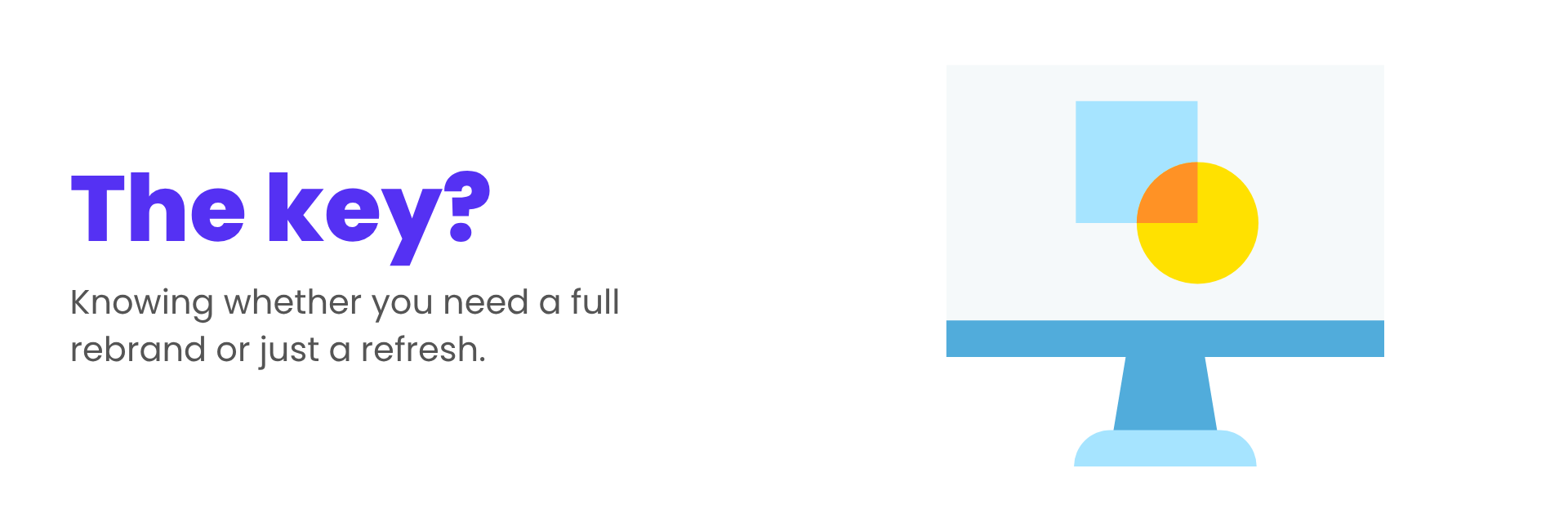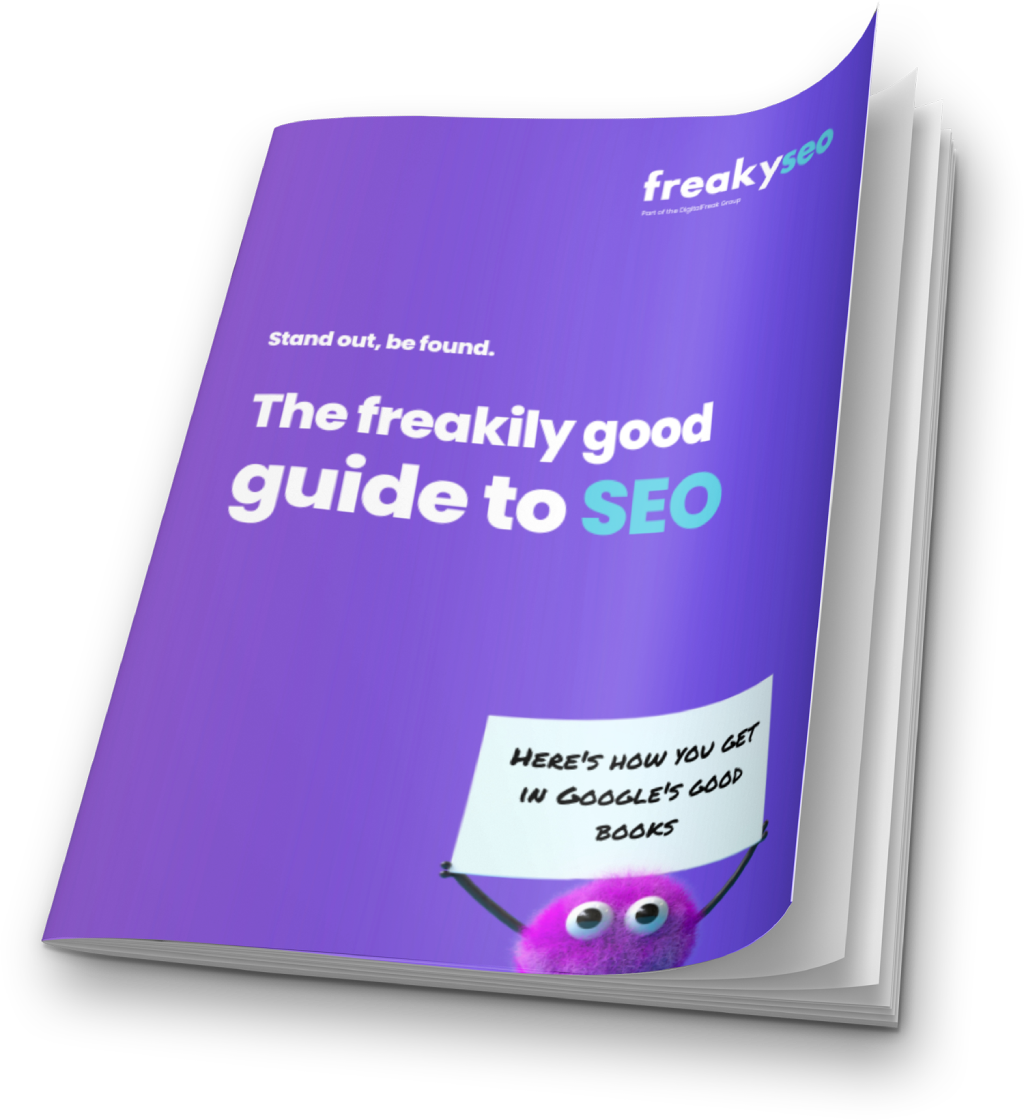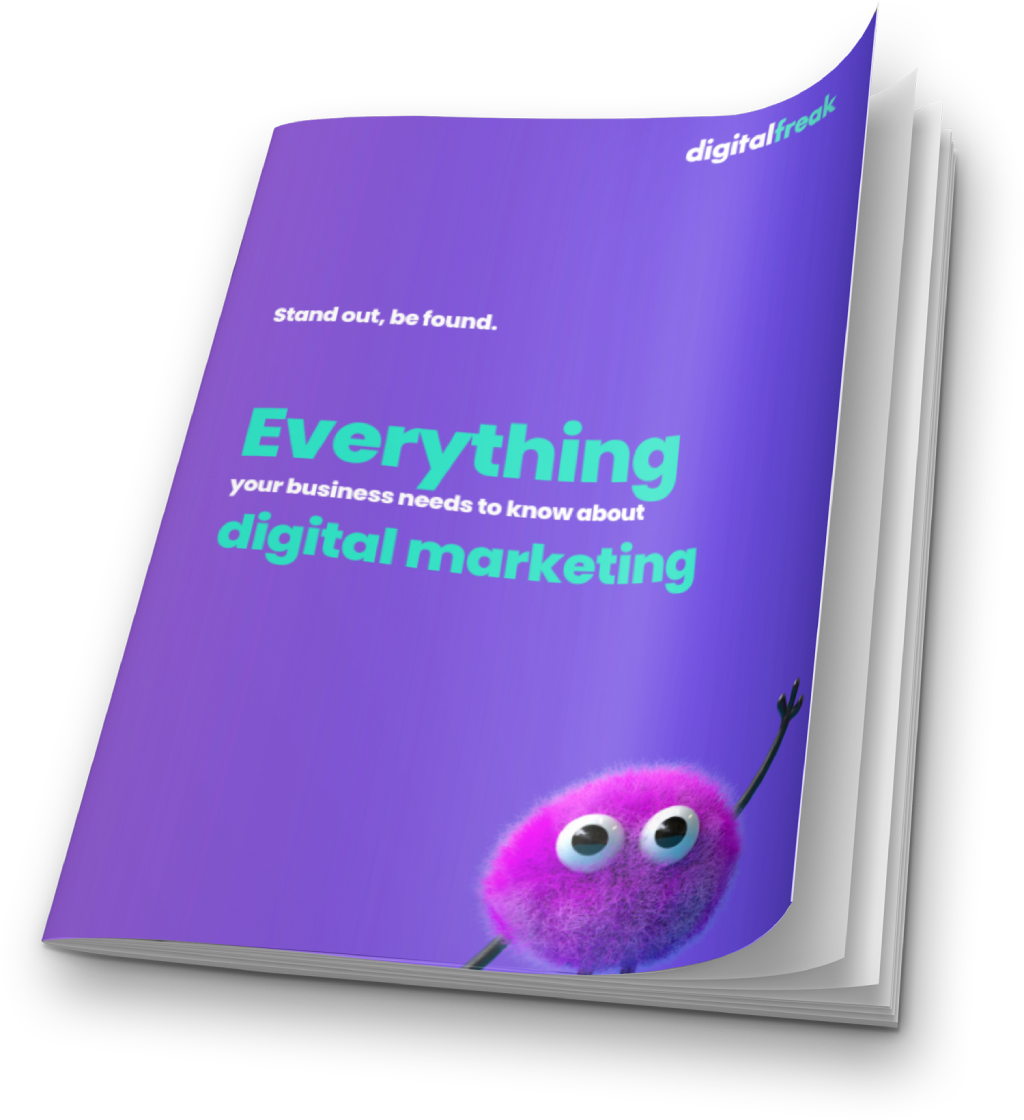Whether you’ve outgrown your logo, shifted your target market, or expanded your offering, rebranding your business is a powerful way to signal change, reset your culture, and reconnect with your audience. And in today’s digital-first world, your online presence is where the transformation truly happens!
A digital rebrand isn’t just about slapping a new logo on your website. It’s about realigning your brand identity with your goals, voice, values, and market—then expressing that clearly and consistently across every digital touchpoint.
But where do you start? And how do you make sure your rebrand is more than just a surface-level makeover?
Let’s walk through the key digital rebranding strategies that help businesses—whether you’re a startup, an established company, or something in between—navigate change and come out stronger.

Why Do Businesses Need Rebranding?
There are many reasons businesses choose to rebrand, especially when so much of customer perception is shaped online.
According to a 2023 study by Lucidpress, consistent brand presentation across all platforms can increase revenue by up to 33%—but if your digital identity is outdated or misaligned, you’re leaving that potential on the table.
Here are some common triggers for a rebrand:
- A shift in product or service offerings
- New leadership or company direction
- Mergers, acquisitions, or expansions
- Audience evolution or market repositioning
- Reputational damage or legal issues
- Outdated design or digital experience
The key? Knowing whether you need a full rebrand or just a refresh. A full rebrand involves a total overhaul of your brand’s visual and verbal identity. A refresh might be as simple as modernising your logo, website, or tone of voice to stay competitive.
Step 1: Audit Your Existing Brand
Before you build something new, take stock of what’s already working—and what isn’t. A digital brand audit helps you understand how your business is perceived online.
What to review:
- Your website (messaging, design, usability)
- SEO and keyword performance
- Social media profiles and engagement
- Online reviews and brand mentions
- Email marketing and CRM performance
- Paid ad creative and landing pages
Use tools like Google Analytics, SEMrush, Hotjar, and Mention to track performance and sentiment.
Pro Tip: Interview your existing customers to find out what they associate with your brand—good and bad. These insights are gold during rebranding.
Step 2: Define or Redefine Your Brand Strategy
Your rebrand should start with a rock-solid understanding of your brand’s purpose, mission, vision, and values. These are your foundation—they’ll guide every decision you make in the rebranding process.
Here’s what to define:
- Your brand positioning: Who are you for? How do you stand out?
- Your brand personality: Are you playful or professional? Bold or understated?
- Your brand promise: What can your audience expect every time they interact with you?
Create a brand messaging framework with key statements, tone of voice guidelines, and value propositions. You’ll use this across web copy, social media bios, ads, and more.
Step 3: Refresh (or Reinvent) Your Visual Identity
A digital-first rebrand means thinking beyond your business card. Every visual asset—logo, colour palette, typography, imagery—needs to look sharp and feel cohesive across screens of all sizes.
That’s because rebrands that modernise visuals for digital performance (think logo readability on mobile or dark mode compatibility) tend to improve user engagement significantly.
Key digital design considerations:
- Is your logo scalable and recognisable at small sizes?
- Do your colours have good contrast for readability and accessibility?
- Does your brand style translate well to social media, email, and mobile UX?
Don’t forget your favicon, app icon, and link previews. These little things matter in digital branding.
Step 4: Rebuild or Optimise Your Website
Your website is often the first point of contact for customers—and in many cases, it’s where trust is won or lost. If your site doesn’t reflect your updated brand, it’s time for a redesign.
What to focus on:
- Consistent brand voice across copy
- Clear calls to action (CTAs)
- Fast load speed and mobile responsiveness
- Search engine optimisation (SEO)
- Accessibility (contrast, navigation, ALT text)
Consider whether you need a completely new site structure or just a design update. Either way, SEO should be a priority—so you don’t lose organic traffic during the transition.
Pro Tip: Redirect old URLs properly using 301 redirects and update your sitemap.

Step 5: Roll Out Your Rebrand Across All Digital Channels
Rebranding is more than updating your logo—it’s about ensuring brand consistency across every platform where your business shows up. That includes:
- Google Business Profile
- Social media platforms
- Paid ads (Google Ads, Meta, LinkedIn)
- Email marketing templates
- Third-party listings (directories, marketplaces)
- Sales and pitch decks
Use a brand toolkit or digital asset management platform to keep everything aligned. If you’re working with a team, create a rebrand rollout calendar with priority channels, key dates, and content plans.
Step 6: Communicate the Change Clearly
Whether your rebrand is subtle or dramatic, your audience needs to understand why it’s happening—and what it means for them – and failing to clearly explain a rebrand is one of the top reasons these strategies can fall flat. Be transparent, confident, and focused on customer benefit.
How to announce your rebrand:
- Write a launch blog or press release
- Send a rebrand announcement email to your list
- Update your “About” page and social media bios
- Share behind-the-scenes stories on Instagram or LinkedIn
- Run paid ads introducing your new brand to fresh audiences
Pro Tip: Frame your rebrand around the value it brings your customers—not just a new look.
Step 7: Monitor, Test, and Optimise
Your rebrand doesn’t stop once you hit publish. Track performance across all digital channels, test different creative and messaging combinations, and listen closely to customer feedback.
Look for changes in:
- Website traffic and bounce rate
- Conversion rates on CTAs
- Social engagement and follower growth
- Brand sentiment in reviews and comments
- Email open rates and click-throughs
Run A/B tests on headlines, images, and CTAs to see what resonates. The best digital brands evolve in response to real-world data and make web maintenance a priority!
Common Digital Rebranding Mistakes to Avoid
Even the best intentions can lead to a branding misfire. Avoid these common pitfalls:
- Rebranding without a clear reason: Change for the sake of it confuses your audience.
- Losing existing brand equity: Make sure returning customers still recognise and trust you.
- Neglecting SEO and redirects: Don’t lose valuable traffic and rankings.
- Inconsistent rollout: Don’t forget about forgotten platforms like LinkedIn banners or Google Maps listings.
- Forgetting internal alignment: Train your team on how to speak and present the new brand.

Rebranding Is More Than a Makeover
A successful digital rebrand isn’t just about how your brand looks—it’s about how it feels, functions, and performs across every channel. Done well, it can refresh your public image, reach new audiences, and better reflect who you are today.
Take your time, do it with purpose, and roll it out with clarity. And if you’re not sure where to start? That’s where we come in.
At Digital Freak, we help small and medium businesses across Australia reinvent their digital presence—from strategy and messaging to web design and SEO. Whether you’re launching a full rebrand or refreshing your website, our Melbourne-based team is ready to help you build a brand that performs.
Book your free branding strategy call today and let’s talk about your next chapter.
FAQs
How do I know if my business needs a rebrand?
If your business has changed direction, your branding looks outdated, or you’re not connecting with your target audience, it may be time to rebrand. You might also notice falling engagement, website bounce rates, or customer confusion—signs that your online presence no longer reflects your offering. We can help you assess the gaps. Book a free strategy call with Digital Freak and get expert advice tailored to your business.
What’s the difference between a rebrand and a brand refresh?
A brand refresh is a surface-level update—think new colours, fonts, or minor messaging tweaks. A full rebrand goes deeper, involving your values, positioning, voice, and identity. If your brand no longer resonates with your audience or matches your goals, a rebrand is the better option. Need help deciding which path is right for you? Let’s talk—book a free call with our Melbourne-based digital strategy team.
Will rebranding hurt my SEO or website traffic?
It can hurt your SEO—but only if done without care. If you change URLs or content without setting up redirects, you may lose rankings. A proper rebrand includes an SEO migration strategy to protect traffic and improve search visibility. We’ve rebranded and relaunched websites for dozens of clients and improving their SEO rather than hurting it! Book a free strategy call and let us help you plan it right.
Do I need to redesign my website during a rebrand?
If your website no longer reflects your brand identity, voice, or customer expectations, then yes—a website redesign is strongly recommended. It’s often the first place people interact with your brand, so consistency and clarity are critical. Even small updates to design, messaging, or UX can make a big difference. Let us audit your SEO and website and guide your rebranding—book a free call with our digital rebranding experts in Melbourne.
What’s the most common mistake businesses make during a rebrand?
One of the biggest mistakes is inconsistency—forgetting to update assets across all platforms, from websites and email templates to Google profiles and ad creative. This can confuse customers and dilute your brand. Another common error is neglecting SEO and performance data. Avoid costly mistakes—book a free strategy call with Digital Freak and get guidance from a brand strategy partner that covers every detail.

Written by
Karyn Szulc – CEO, Founder
When clients work with me, they get exactly what they want - no-nonsense, authentic digital marketing that works! With my industry experience, eye for detail, and a team that goes the extra mile, every client gets the personalised, expert treatment they deserve. Let’s get you online – and growing!














